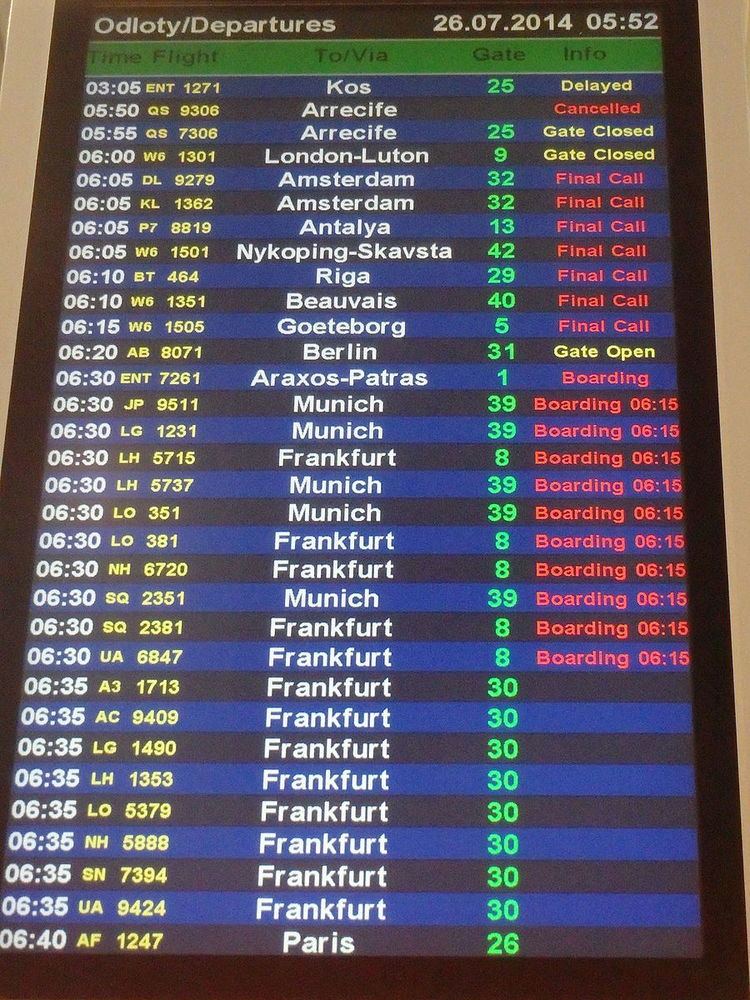 | ||
A codeshare agreement, sometimes simply codeshare, is an aviation business arrangement where two or more airlines share the same flight. Sharing, in this sense, means that each airline publishes and markets the flight under its own airline designator and flight number as part of its published timetable or schedule. A seat can be purchased on each airline's designator and flight number, but is operated by only one of these cooperating airlines, commonly called the operating carrier or more precisely (and in line with definitions in IATA Standard Schedules Information Manual): "Administrating carrier". The term "code" refers to the identifier used in flight schedule, generally the two-character IATA airline designator code and flight number. Thus, XX123 (flight number 123 operated by the airline XX), might also be sold by airline YY as YY456 and by ZZ as ZZ9876. Airlines YY and ZZ are in this case called "Marketing airlines" (sometimes abbreviated MKT CXR for "marketing carrier"). Most of the major airlines today have code sharing partnerships with other airlines, and code sharing is a key feature of the major airline alliances. Typically, code-sharing agreements are also a part of the commercial agreements between airlines in the same airline alliances.
Contents
- History
- Reasons and advantages
- For passengers
- For airlines
- Competitive concerns
- Air rail alliances
- References
Under a code sharing agreement, the airline that administrates the flight (the one holding the operational permissions, airport slots and planning/controlling the flight and responsible for the ground handling services) is commonly called the operating carrier, often abbreviated OPE CXR, even though the IATA SSIM term "Administrating carrier" is more precise. The reason for this is that a third carrier is involved, typically in the case that the airline originally planning to operate the flight needs to hire a subcontractor to operate the flight on their behalf (typically a wet lease, meaning an aircraft is leased with crew and all facilities to fly, commonly due to capacity limitations, technical problems etc.) In this case, the airline carrying the passenger should be designated the operating carrier, since it is the one carrying the passengers/cargo.
When a flight is sold under several designators and flight numbers as described above, the one published by the "Administrating carrier" is commonly called a "prime flight" (as opposed to a codeshare marketing flight).
Several types of codeshare exist, commonly three types:
History
In 1967, Richard A. Henson joined with US Airways predecessor Allegheny Airlines in the nation's first codeshare relationship. The term "code sharing" or "codeshare" was coined in 1989 by Qantas and American Airlines, and in 1990 the two firms provided their first codeshare flights between an array of Australian cities and U.S. domestic cities. Code sharing has become widespread in the airline industry since that time, particularly in the wake of the formation of large airline "alliances." These alliances have extensive codesharing and networked frequent flyer programs.
Reasons and advantages
Under a code sharing agreement, participating airlines can present a common flight number for several reasons, including:
For passengers
For airlines
Competitive concerns
Much competition in the airline industry revolves around ticket sales (also known as "seat booking") strategies (revenue management, variable pricing, and geo-marketing). Criticism has been leveled against code sharing by consumer organizations and national departments of trade since it is claimed it is confusing and not transparent to passengers.
Air-rail alliances
There are also code sharing agreements between airlines and rail lines. These are more formally known as an air-rail alliance, but more commonly known as "Rail & Fly" due to the popularity of the Deutsche Bahn codeshare with many airlines. They involve some integration of both types of transport, e.g., in finding out the fastest connection, allowing exchange between an air ticket and a train ticket, or a step further, the air ticket being valid on the train, etc. In Europe these air-rail alliances are used to divide markets by selling these combination tickets abroad for a lower price to attract more customers. The systems also prevent local customers from buying these much cheaper tickets as the customer is only allowed to board the plane with a valid train stamp from a station outside the country.
